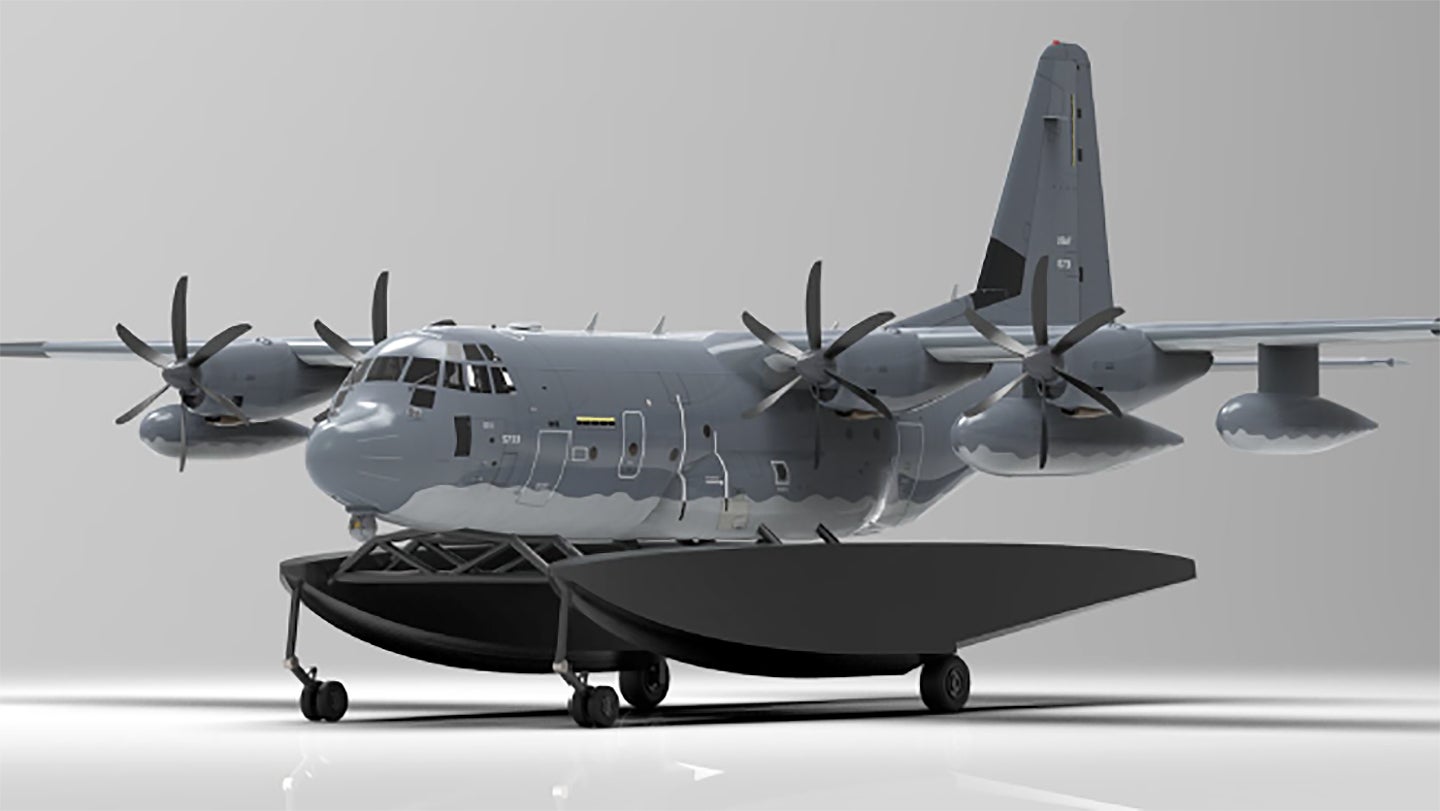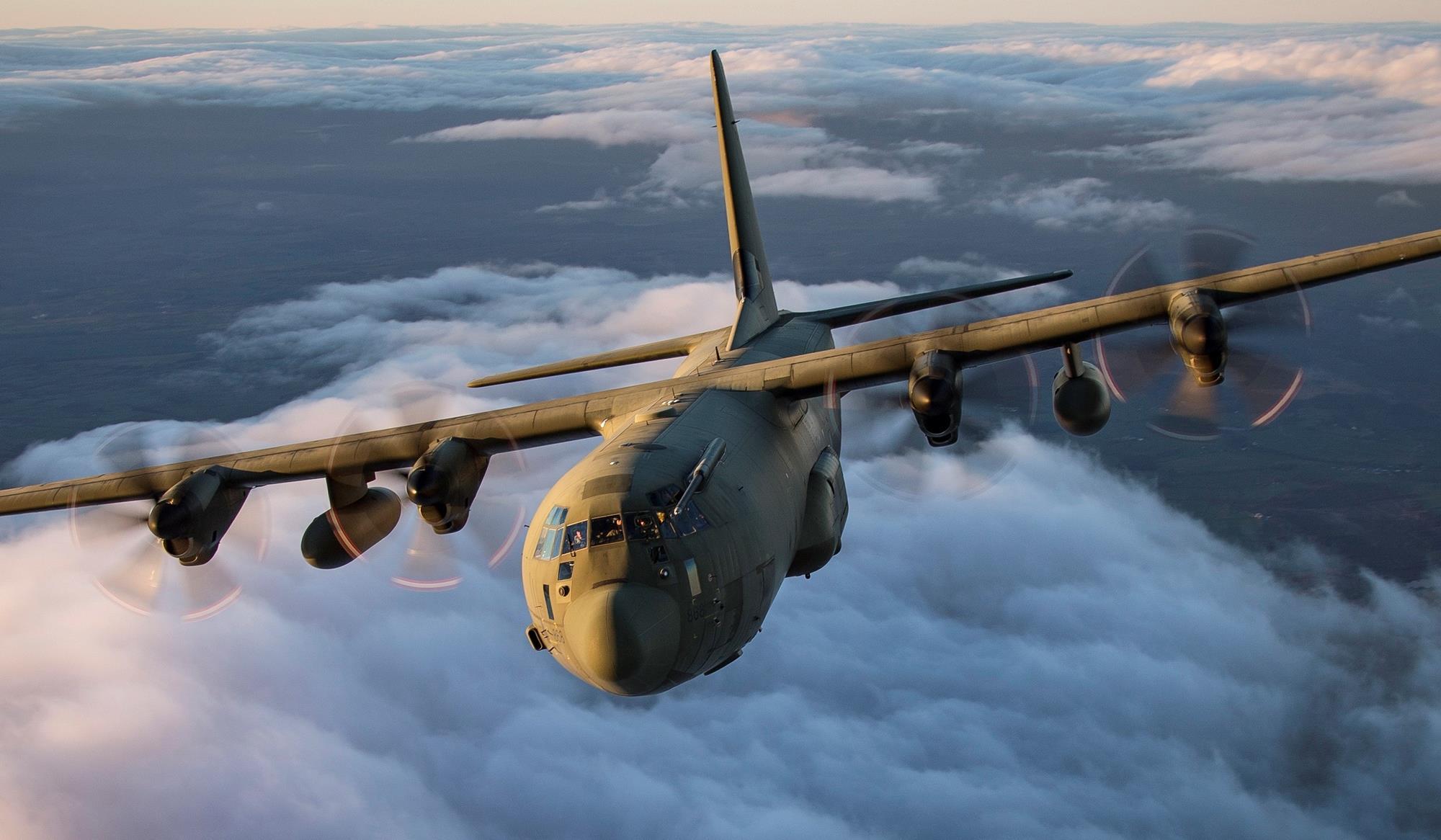C 130 Amphibious - There have been proposals for the C-130 Hercules naval aircraft in the past, but the US special operations community will pursue it.
The U.S. military is once again considering the possibility of an amphibious variant of the C-130 Hercules to support special operations forces from the coast. In its initial stages, the project presented an artist's concept of the MC-130J Commando II multi-mission combat vehicle, equipped with a large fuselage and mounted underwater wings. The MC-130J is the latest version of the Air Force's special operations Hercules, designed to insert, extract or recover special operations forces, as well as helicopters and rotary-wing aircraft to enter restricted areas for refueling.
C 130 Amphibious

The new effort, known as the MC-130J amphibious capability, or MAC, was unveiled today at a briefing by US Air Force Col. Ken Kuebler, US Special Operations Command (SOCOM) Sustained Wing Program Executive Officer (PEO-FW). , at the annual Special Operations Forces Industry Conference (SOFIC). At a media roundtable in the afternoon, Kuebler added that a feasibility study is underway for the project, and that the team is working with unspecified "innovation partners" to validate the concept using digital design tools. This, in turn, helps speed up research and development and keeps costs down.
Lockheed Martin C 130j Super Hercules
A US Air Force MC-130J Commando II aircraft performs an in-flight refueling mission off the coast of Okinawa, Japan.
A slide from Col. Kuebler's briefing in which the MAC concept is mentioned as one of several "focus areas" for SOCOM PEO-FW., SOCOM.
It's worth noting that while the concept art from Kuebler's briefing at the beginning of this article showed the large wings attached to the MC-130J, it emphasized that the MAC concept was looking for an amphibious aircraft that could operate from the ground. , as well as water bodies. A basic float plane can't operate from land, but the addition of wheels to floats gives it the ability to do so. There are other ways to make a plane truly amphibious.
The basic idea of the C-130 in the water has been around for decades, and it's a concept that has been discussed in some parts of the Pentagon. In fact, the aircraft's original manufacturer, Lockheed, built the fully amphibious Hercules in the 1960s with a boat-like hull, but the US Navy has conducted research using at least a radio-controlled scale model version. Lockheed then became Lockheed Martin, manufacturer of the current C-130J family, including the MC-130J.
C 130 Hercules Airlifters Delivered
The option of mounting the C-130J variant with pontoon-like wings on the fuselage, as shown in the PEO-FW concert art, is also not new. Lockheed Martin introduced it in the late 1990s after receiving interest from the US Navy as a way to get SEAL teams and their specialized submarines on and off the coast.
Of course, attaching large wings to the Hercules would introduce severe drag and weight penalties, reducing range and payload capacity, but floatation is not unheard of for seriously large aircraft.
However, given the amphibious requirement, the concept art is not what SOCOM currently envisions for the Marine Hercules, but a simple use of an old float plane. Although the ship-like hull will not affect performance at all, it will require a redesign, and Lockheed Martin is not known to have been working on it lately.

Regardless of its exact configuration, the amphibious MC-130J could offer new and emerging capabilities to the US special operations community, particularly within future expeditionary and distributed operations. In general, the U.S. military has been exploring concepts of operations in recent years from harsh, remote areas with very limited infrastructure, when large bases are destroyed or otherwise unavailable.
Ag600 Completes First Water Takeoff: How Difficult To Build An Amphibious Aircraft?
Air Force MC-130J crews learn to operate in just such conditions, and much effort has been put into expanding the capabilities of the Commando II, as well as the older MC-130H Combat Talon II. areas with little or limited infrastructure. You can read about these initiatives in the past war zone.
At the same time, the U.S. special operations community is in the process of exploring how it can contribute to high-level conflicts, particularly in large-scale environments, against close adversaries such as China or Russia. Asia-Pacific region. This includes operating from small islands in the Asia-Pacific region, and even some small islands do not have enough space to build a proper airfield. Amphibious aircraft can be an excellent solution, especially during a conflict, if the existing airfield infrastructure is not destroyed in the first attack wave.
During the media roundtable, Col. Kuebler said potential conflicts with "peer and peer" adversaries and "emerging threats" are some of the drivers of the MAC project. He also acknowledged that the aircraft could be particularly expensive in the Pacific Ocean, but noted that it could operate over water.
The amphibious C-130 would be able to perform a wider range of missions than the standard MC-130J, and Kuebler said when asked if the MAC would perform the same mission, "I wouldn't make that assumption." Commando II. If the Hercules were to land, various elements of the US military, in addition to the special operations community, could be interested in acquiring them.
China Flight Testing Three Ag600m Large Amphibious Aircraft
As of 2016, the U.S. Marine Corps "toolbox" can be used to develop a tablet war game and includes a naval aircraft division with a clear focus on operations in the Pacific. The document slide shown below provides information on the floating Cessna 208 Caravan, the Bombardier (now Viking Air) CL-415MP amphibious aircraft, and the Japanese US-2 amphibious aircraft, as well as the range operating from Manila. Philippines.
"Seaplanes are a proven, cost-effective operational capability that can provide a line of communication to remote EAB sites without port or airfield infrastructure," the document states. EAB is Expeditionary Advance Base Operations, the Marine Corps' broad concept for conducting expeditionary and distributed operations, which you can read more about here.
The US-2 addition is currently in service with Japan's Self-Defense Forces and is used primarily for search and rescue, such aircraft in the Pacific and other missions they may perform, including non-combat missions. disaster relief and humanitarian aid roles. China is also working heavily on its larger amphibious vehicle, the AG600, which is expected to have a major military, or at least military, role, particularly in support of hot islands and other infrastructure in the hotly contested south. China Sea.

With all of this in mind, in addition to the Navy and Marine Corps, the US Coast Guard may be another service interested in the amphibious Hercules. This C-130 operator and waterborne version can operate as a long-range search-and-rescue aircraft, allowing it to retrieve survivors thousands of miles from shore, weather and sea conditions. It should be noted that the Coast Guard operated the HU-16 Albatross amphibious aircraft in the 1980s.
N.y. 109th Airlift Wing Sends 'skibird' To Paris Air Show > National Guard > Guard News
The naval variant of the Hercules can also support airborne firefighting missions, which are currently powered by the Air National Guard's C-130 Modular Airborne Firefighting System, or MAFFS.
While it remains to be seen how the MAC effort will progress and what specific roles the MC-130J amphibious potential could fill, Kuebler noted that there is "enough command interest" to hope to discuss it at length. the concept eventually becomes a reality. The Air Force Special Operations Command says it needs a floating MC-130J, and has a plan to get one.
In May, we reported that the U.S. Air Force Special Operations Command (AFSOC) wanted to realize the long-held dream of the C-130 naval aircraft. In fact, the MC-130J is listed as one of the new acquisition priorities known as amphibious capability or MAC. While we gave a little glimpse of what it might look like when we filed this report, there are other historical design concepts, and now we're going to take a closer look at what they mean, and yes, it's a floating C-130.
In fact, they have proposed several similar swimming concepts, some of which appear traditional, while others are more streamlined, conformist, and futuristic. The capability appears to include requirements for amphibious operations. In other words, the MC-130 still exists
Mc 130j Commando Ii
Amphibious vehicle r c, c-130, c wolf amphibious bush aircraft, c 130, c 130 toy airplane, lockheed c 130, lockheed c 130 hercules, r c amphibious, c 130 propeller, c 130 jobs, r c amphibious tank, c 130 toy plane
0 Comments